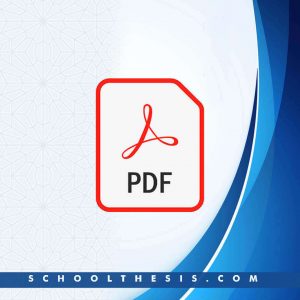
Evaluation of Growth Traits and Semen Quality Using Biochemical and Igf-1 as a Molecular Marker in Three Genotypes of Nigerian Indigenous Chickens
Quick Navigation for Final Year Undergraduates, Masters (Thesis), and Ph.D. Dissertation Students Who Need Our Services on Their Research Works
| Find More Project Topics | FIND HERE |
| Hire Us for Thesis Works | HIRE NOW |
| Hire Us for Project Works | HIRE NOW |
| Hire Us for Seminar Works | HIRE NOW |
| Hire Us for Assignments | HIRE NOW |
| Hire Us for Proposals | HIRE NOW |
| Contact Us | HERE NOW |
Chapter one on Evaluation of Growth Traits and Semen Quality Using Biochemical and Igf-1 as a Molecular Marker in Three Genotypes of Nigerian Indigenous Chickens
INTRODUCTION
BACKGROUND OF THE STUDY
The poultry industry is a versatile business in Nigeria but the development has been to the detriment of the indigenous birds which have been neglected and not properly managed (Adebambo et al., 2015). The indigenous chickens (Gallus domesticus) have been kept in Africa for many generations in subsistence systems. The Nigerian indigenous chicken constitutes between 80 and 90 percent of the local population of chickens in Nigeria. Three other major genes have been identified in these local chickens apart from the normal feathered type. These are: Frizzle, naked neck and sex-linked dwarfism. Each of these genes plays a significant role in the productive adaptability of the Nigerian local chicken (Ozoje and Ikeobi, 2015). Despite being in Nigeria for long, the indigenous chickens consist of various unimproved sub-populations of heterogeneous characteristics, not yet classified into breeds and varieties since they do not breed true to type and have no clear plumage colours (Obioha, 2012; Ibe, 2011).
The indigenous chicken, also known as the local chicken is the general term given to those chickens kept on an extensive system, scavenging free-range, having no identified description, and being dual-purpose and unimproved (Horst,2015; Pedersen, 2012). They appear to be the cheapest and sustainable means of producing high quality animal protein for the expanding populations of developing countries like Nigeria. They are self-reliant and hardy birds with the capacity to withstand harsh weather conditions and adaptation to adverse environments.
Disclaimer
This research material is intended for academic use only and should be used as a guide in constructing your research project and seminar presentation. You should never duplicate the content word for word (verbatim), as SCHOOLTHESIS.COM will not be held liable for anyone who does.
The purpose of publishing this material is to alleviate the stress of hopping from one school library to the next in search of research materials. This service is lawful because all educational institutions allow students to read past projects, papers, books, and articles while working on their own.
SCHOOL THESIS is merely giving this information as a research reference. Use the document as a reference or structure for your own research paper. This paper’s content should be able to assist you in coming up with new ideas and thoughts for your own study
Evaluation of Growth Traits and Semen Quality Using Biochemical and Igf-1 as a Molecular Marker in Three Genotypes of Nigerian Indigenous Chickens research paper, should only be used as a guide.
